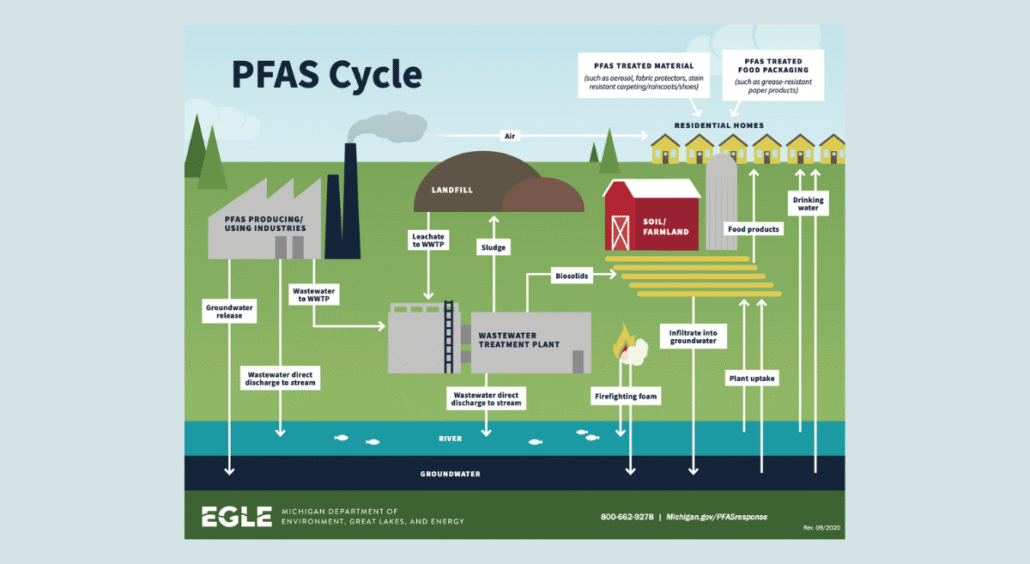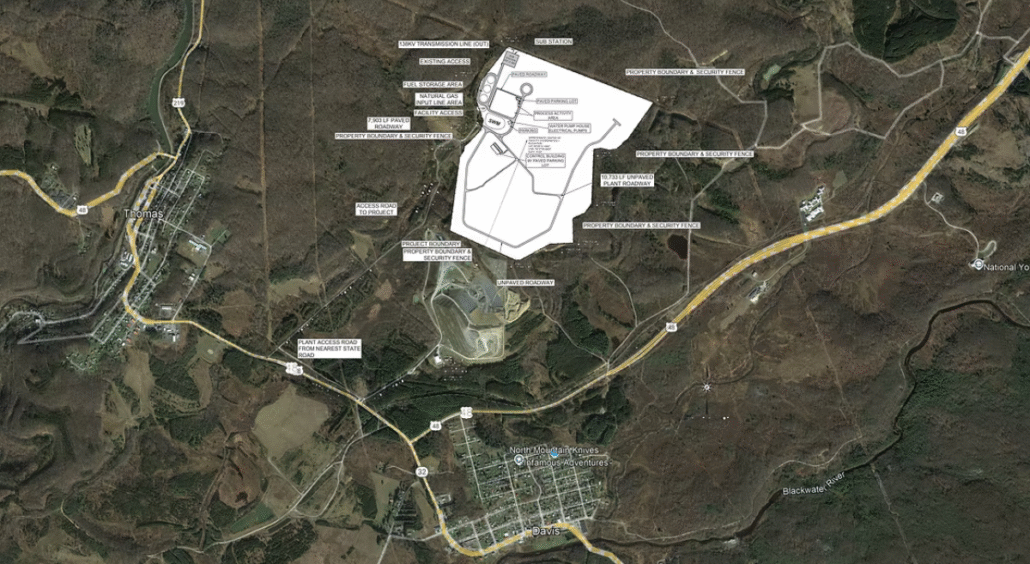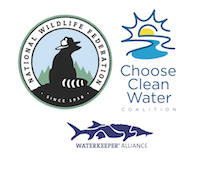Haunting Hazards Lurking in Our Streams and Communities
Updates from WV Rivers Coalition
October 2025
Happy Halloween, everyone!
This spooky season, we’re uncovering the real-life hazards lurking in West Virginia’s rivers and streams. From ghostly pollution to zombie legislation, these are the stories that send a chill down our spine – because the truth is scary.
Spooky Science: Selenium in West Virginia Waters with Senior Scientist Than Hitt
Examples of selenium poisoning in fish and waterfowl. Left: fish with curved spines. Right: birds found dead at collection, including one with malformed beak and feet. Source: Springer Nature Link and USGS.
If holidays had elements, Halloween would have to claim Selenium (Se).
Se’s biochemistry shows some of the creepiest moves on the periodic table.
The first thing to know is that Se is an essential micronutrient for animals. That means all animals need it for normal functioning, but cannot produce it, so they must consume it in their diet.
Once those dietary needs are met, however, Se becomes toxic at the drop of a hat.
Here’s how: Once consumed, Se sneaks into spots normally held by sulfur, which build the shape of proteins (typically through incorporation into the amino acid selenocysteine) – and this leads to some frightening outcomes as you see above. Se is just similar enough to sulfur to fit into protein folds, but different enough to cause major damage.
Selenium toxicity hits the earliest life stages hardest, doing its worst to wildlife when passed down by mothers to their eggs, larvae, and juveniles. This is because Se is gathered up from the mother’s body and sent into her offspring through vitellogenesis – the process of yolk development in eggs.
Se toxicity in fish and wildlife is downright scary. Se-contaminated fish often show misshapen backbones and jaws, or more severe malformities. Waterfowl can also suffer embryonic deformities and organ damage that reduce their survival. That’s because waterfowl often rely on wetland habitats that are connected to streams where Se loads can be highest. When it comes to mutated fish and wildlife, Se is all trick and no treat.
So how did it get into streams and wetlands in the first place? That may be the scariest part. Se naturally occurs in some rock formations across Appalachia – particularly in coal deposits of the Allegheny and upper Kanawha formations. And when the coal is mined, rain dissolves Se from the rocks and flushes it into streams and rivers, where it becomes incorporated into foodwebs, impacting fish and wildlife.
And it gets even worse. DEP is poised to weaken the water quality standard for Se during the upcoming legislative session – they aim to allow for more Se in fish, and this is important because this is how compliance with the water quality standard is measured. This all stems from a request by the WV Coal Association to weaken water quality standards in certain mining areas, and DEP apparently will propose extending those weakened standards across the state.
But here’s the good part: WV Rivers will be watching this closely, and we will need your help to push back against this scary proposal to allow more Se toxicity in the 2026 legislative session.
The Forever Curse: PFAS in Our Water
Invented for convenience. PFAS began as a human innovation, but their lasting impact on our environment and health is anything but convenient.
PFAS, more commonly known as “forever chemicals,” are a contamination crisis that just won’t fade away. Found in the raw or untreated water of more than 130 water systems across West Virginia, these toxic substances threaten public health for generations.
WV Rivers Coalition is partnering with WVDEP and community members in Northern West Virginia to develop local PFAS Action Plans. We have already hosted in-person gatherings in the Eastern Panhandle and plan to host two virtual sessions, including one for Spanish speakers. We hope you will join an upcoming meeting and help break this curse for good.
- Follansbee: Mon, Nov. 17 | 6-8 pm | Follansbee Community House, 1425 Main St
- Chester: Tues, Nov. 18 | 6-8 pm | Chester City Building, Multi-Purpose Room, 600 Indiana Ave
- Weirton: Wed. Nov. 19 | 6-8 pm | Holiday Inn, Washington & Jefferson Room, 350 Three Springs Dr
- Benwood: Thur. Nov. 20 | 6-8 pm | Benwood McMechen Housing Authority, Kubek Room, 2200 Marshall St.
- Virtual Session for Spanish Speakers: Tues. Dec. 2 | 6:45-8:30 pm | Zoom
- Virtual Session for English Speakers: Thurs. Dec. 11 | 12-2 pm | Zoom
Learn more and RSVP for an upcoming meeting at wvrivers.org/pfas.
The Mysterious Menace: Data Centers and the Disappearing Details
A map of the proposed data center from Tucker United.
Across West Virginia, massive data centers are quietly being planned – and in many cases, the public is being left in the dark. Permits are heavily redacted, company names are unclear, and essential details about water use and chemical storage remain hidden.
What we do know: These facilities require enormous amounts of water and energy to keep servers cool, threatening the delicate balance of local ecosystems and community water supplies.
During our recent staff retreat, WV Rivers met with members of Tucker United, a grassroots coalition resisting a proposed data center between Thomas and Davis – a project of Fundamental Data LLC that could upend the region’s outdoor tourism economy and rural way of life. Tucker County is West Virginia’s 19th highest grossing county for tourism and one of the fastest growing, thanks to its rivers, trails, and mountain communities.
The proposed data center would draw heavily from Pendleton Creek, a key input to the Thomas Reservoir. The amount of water that could be withdrawn remains undisclosed. Residents are also deeply concerned about the plan to store up to 30 million gallons of diesel fuel on-site – just a mile from an elementary school – and the lack of information about how those fuels or emissions might affect air and water quality.
Local officials and residents are calling for transparency, community control, and answers to basic questions:
- Where is the water coming from?
- How much will be used?
- What happens if something goes wrong?
Tucker United, Friends of Blackwater, Friends of the Cheat, the West Virginia Highlands Conservancy, and Sierra Club are collaborating to ensure that decisions about large-scale development are made with full public information and meaningful local input, considering how these projects align with West Virginia’s long-term environmental and economic health.
Organizers are asking Charleston locals who want to support their efforts in a peaceful way to join them for the WV Department of Environmental Protection (DEP) Environmental Quality Board hearing on Wednesday, November 5, at 8:00 am or 12:00 pm at the DEP office (601 57th St, SE, Charleston, WV 25304).
Please note: This is not a public hearing. This is an evidentiary hearing, meaning witnesses for each party involved in the appeal will testify. The Air Quality Board will not entertain any questions or comments from the public at this time.
The Frankenstein Industry: Petrochemicals and Plastic “Recycling” in the Ohio River Basin
A plastic baby doll head lodged in the riverbank found during a river clean up. Photo courtesy of Jennifer Flippin.
Across the Ohio River Basin, fossil fuel and plastics companies stitch together a massive petrochemical buildout, kind of like an industrial Frankenstein. West Virginia’s Kanawha River Valley is home to one of the highest concentrations of chemical facilities in the nation. From antifreeze and solvents to PFAS and pesticides, the region’s plants have produced a toxic mix of industrial chemicals for generations.
The Clean-Seas WV facility in Belle is one of the latest projects we are keeping a watch on in Kanawha County. This out-of-state company plans to process plastic waste through pyrolysis – heating plastics without oxygen to create oil, gas, and a solid residue. While marketed as “recycling,” this process actually produces new fuels and chemicals that can reenter the pollution cycle. Clean-Seas expects to generate about 4 million gallons of pyrolysis oil each year, along with residues that may be sold as soil amendments and gases that could be burned or turned into hydrogen.
Despite its green branding, “chemical recycling” is part of the same petrochemical chain driving pollution and plastic production across the Ohio River Basin. It risks releasing more toxins into the air and water – and continuing the legacy of burdening local communities with industry’s hidden costs.
WV Rivers is working alongside regional partners to call for transparency, stronger oversight, and a future for the Ohio River Basin that prioritizes clean water and healthy communities.
Sign up at the button below to receive updates on those efforts.
A Ghost in the Stream: Southern WV’s Water Crisis
WBOY reporter Danny Delanty scoops a stringy white substance from a creek in Wyoming County. Photo by Karen Lane.
Two years after contaminated water flooded Jamie and Tina Christian’s yard and drained into Indian Creek near the former Pinnacle Mining Complex, the West Virginia Department of Environmental Protection (WVDEP) has dismissed its civil case and says it is shifting toward reclamation.
WVDEP has revoked the mine’s permit and transferred responsibility for cleanup to the Office of Special Reclamation, with roughly $3.4 million in forfeited bonds, civil penalties, and settlements available to fund the work. Plans include filling open mine shafts, sealing abandoned facilities, and monitoring discharges for compliance with water quality standards.
But on the ground, residents say not much has changed: The air is heavy with a sulfuric smell that causes headaches, nausea, and more for those with prolonged exposure, and neighbors continue to depend on one another for clean water distribution. For communities like the Christian’s, trust will come only when clean, safe water returns to the creekbeds.
WV Rivers will continue tracking this cleanup and others across southern West Virginia, ensuring residents’ voices remain central in conversations about accountability, reclamation, and recovery.
The Empty Coffer in the WV State Capitol: West Virginia’s Unfunded Flood Promise
The WV State Capitol in Charleston, WV.
Years after lawmakers created the West Virginia Flood Resiliency Fund, it still sits empty. Designed to help communities prepare for and recover from devastating floods, the fund is an empty coffer, even as extreme weather grows more frequent and waters rise higher across the state.
West Virginians know too well that flooding isn’t a distant threat, it’s a reality shaping our future. Fully funding the Resiliency Fund would be a meaningful investment in safer communities, stronger infrastructure, and cleaner waterways.
As we gear up for the 2026 legislative session, WV Rivers will be urging lawmakers to bring this fund to life. We’re also keeping a close eye on the zombie Above Ground Storage Tank Act – originally introduced after the 2014 Elk River Chemical Leak to safeguard our drinking water. Once a strong, protective law, the legislature has chipped away at it session after session with attempts to weaken its measures.
Want to make your voice heard? Join us for our upcoming virtual Advocacy Training Series on Dec. 4 and Dec. 9 at 7:00 pm to learn how you can take action this session for clean, safe, and resilient water for all.










